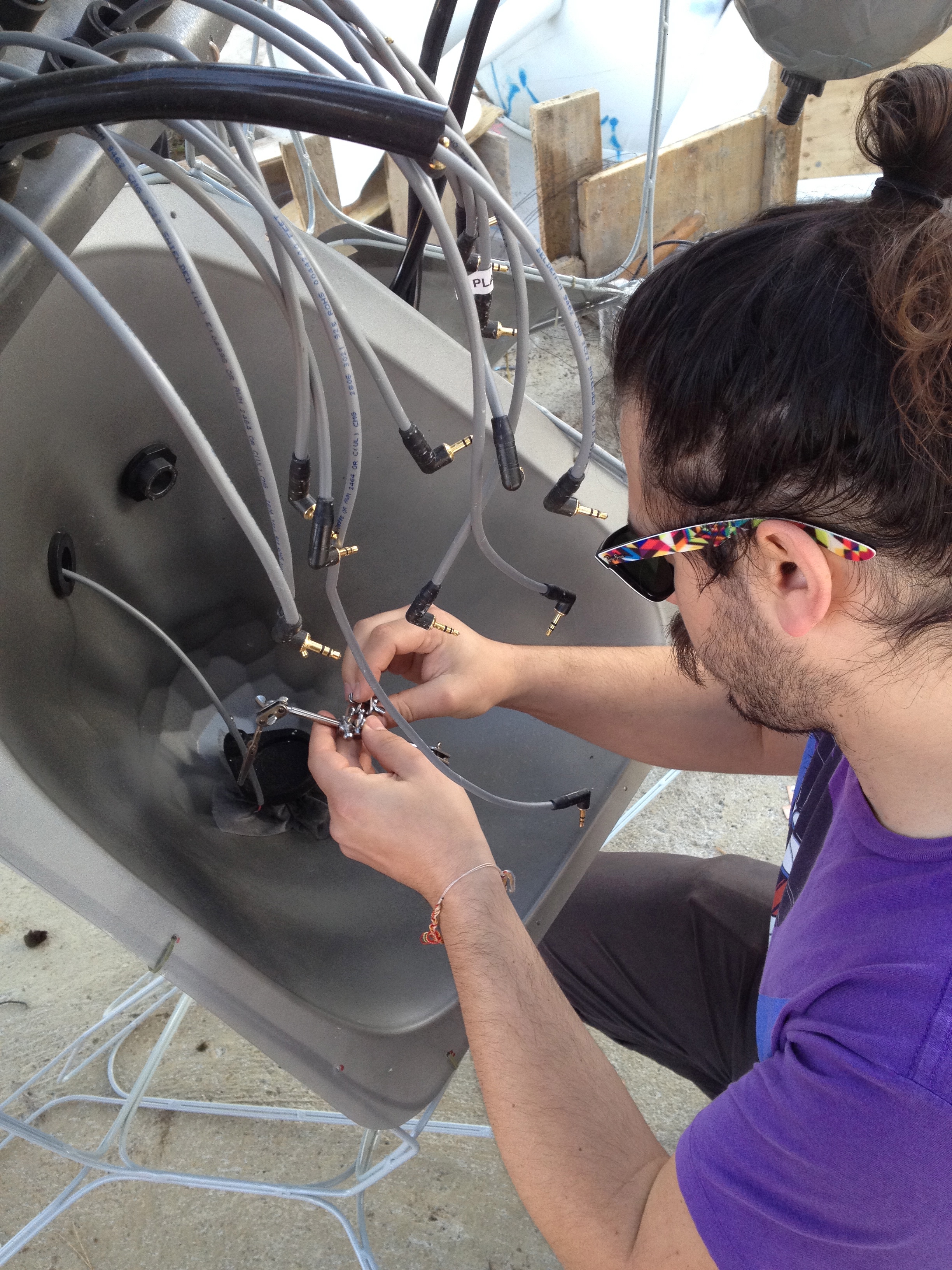CULTIVATING FREQUENCIES
MAX/MSP
ARDUINO
PCB DESIGN (Eagle)
MAX/MSP
ARDUINO
PCB DESIGN (Eagle)
Cultivating Frequencies transforms a garden into an interactive and generative musical installation by analyzing data from the garden and translating them into musical components.
Cultivating Frequencies was created in collaboration with the Environmental Masters architecture class at Art Center College of Design, in which I was hired as a contractor to lead the musical, electronic, and interactive development. In fact, Cultivating Frequencies was a small portion of the larger Stgilat Pavilion project which was a collaboration between the architecture firm Cloud 9 and the Art Center College of Design’s Environmental Design program.
I was tasked with creating a generative musical system that would collect environmental data from the piece’s location and the hydroponic gardening system that would maintain the garden. The data available to me was temperature, humidity, soil moisture, PH, and time/date. Early in the design process, we wondered whether or not more interactivity could be integrated into this autonomous garden. We wondered if, in fact, the plants themselves could be transformed into touch sensors. With a small amount of research using a simple touch capacitive circuit and a wire buried in soil, we found that it was possible (see proof of concept video below).
After this development, the interaction became a key component of the system. Embodying the symbiotic relationship between human and garden by encouraging the user to not only view the garden but to engage it directly through touch. Another layer of user interaction was integrated as a sort of control, so the user’s presence would trigger the musical component using weatherproof ultrasonic sensors.
With the agreed-upon data and user interactions, I set out to design a generative musical system that not only created a pleasing experience but also aimed to communicate the status and health of the garden through sound. As I gathered sample data and plotted it out that the name and conceptual foundation of the piece came to be. Cultivating Frequencies was my way of expressing the connection between the data, sound, and the act of gardening, which all center around the notion of frequency. If you look at temperature data one point at a time all you have is a single data point without context. If you look at the same data by the hour over many days, specifically plotted on a graph, you get a waveform. In the context of gardening, there are also many cycles that happen. Watering, repotting, fertilizing, harvesting, etc, all have a specific frequency at which they occur. So the heart of this piece was trying to connect those ideas together by building in this idea of different frequencies and cycles to generate music that would change hourly, daily, monthly, and yearly. See the diagram below for an overview of the generative musical system.

Alongside the design of the generative musical system, I also did a lot of research about how to get more accurate and useful data from the plants as touch sensors. During my research I found the work being done by Disney R&D to create more intelligent touch sensors by a process called Swept Frequency Capacitive Sensing. While the implementation details of their work were proprietary, Mads Hobye , with the help of Nikolaj Møbius, was able to bring a similar system to the Arduino micro-controller. With the permission of the author, I worked on an open-source library, called SweepingCapSense, that would allow the use of this type of touch sensing for many inputs on an Arduino compatible micro-controller in a much easier library format. My effort in this area was published at the 2014 International Conference on New Interfaces for Musical Expression where I gave a talk and demonstration of the work.
The last major component of the work was creating a custom PCB shield for an Arduino Mega that would allow for the use of 16 simultaneous SweepingCapSense sensors, four ultrasonic sensors, and a PH sensor. Using Eagle PCB CAD software, I designed and printed the board for this project. I designed the PCB to specifically work with an enclosure that would allow for easy assembly on site, using audio connectors (8mm headphone and XLR jacks) to connect the sensors to the PCB.
Also, please check out the very nice write up The Creators Project did on this project.







COLIN HONIGMAN CREATIVE TECHNOLOGIST LOS ANGELES